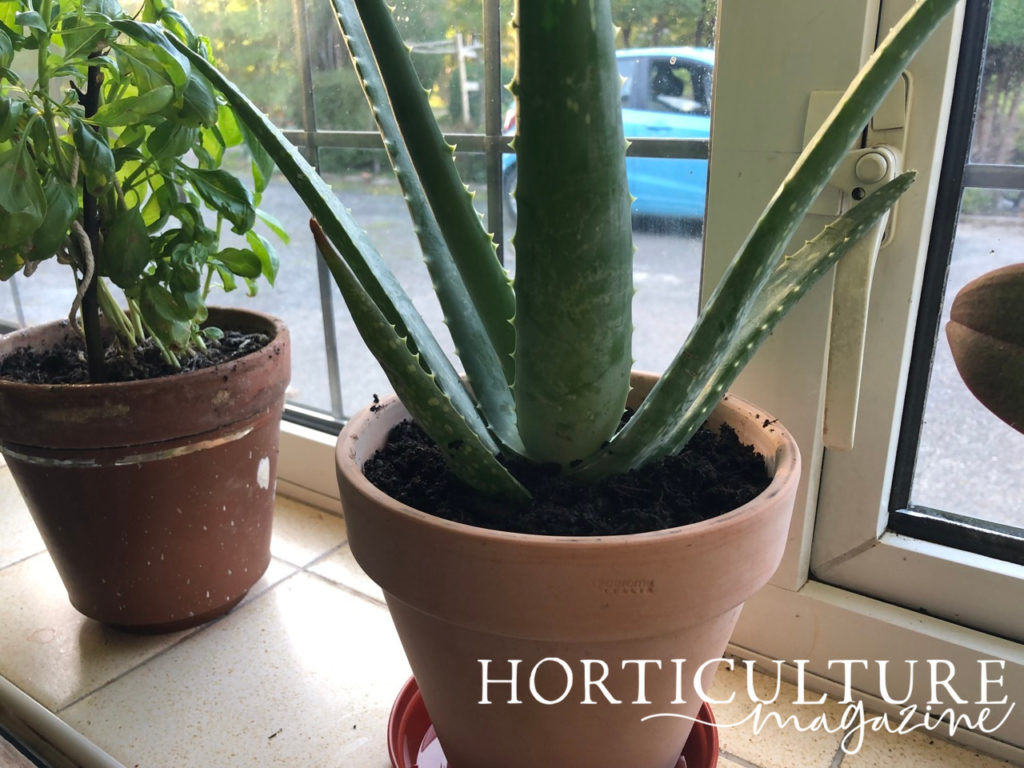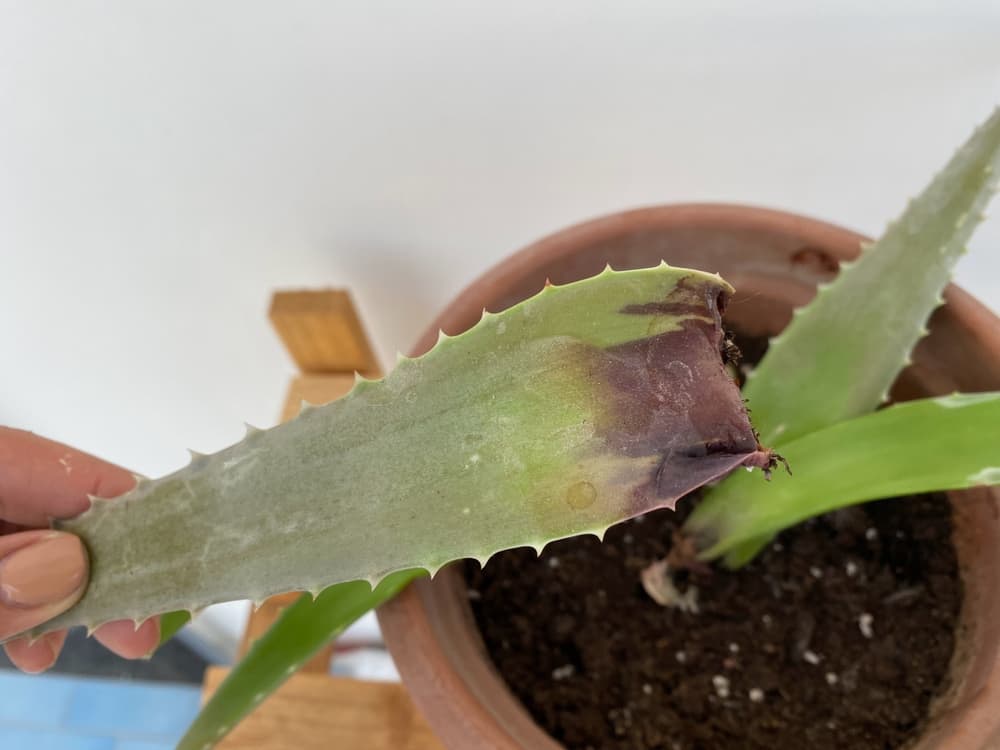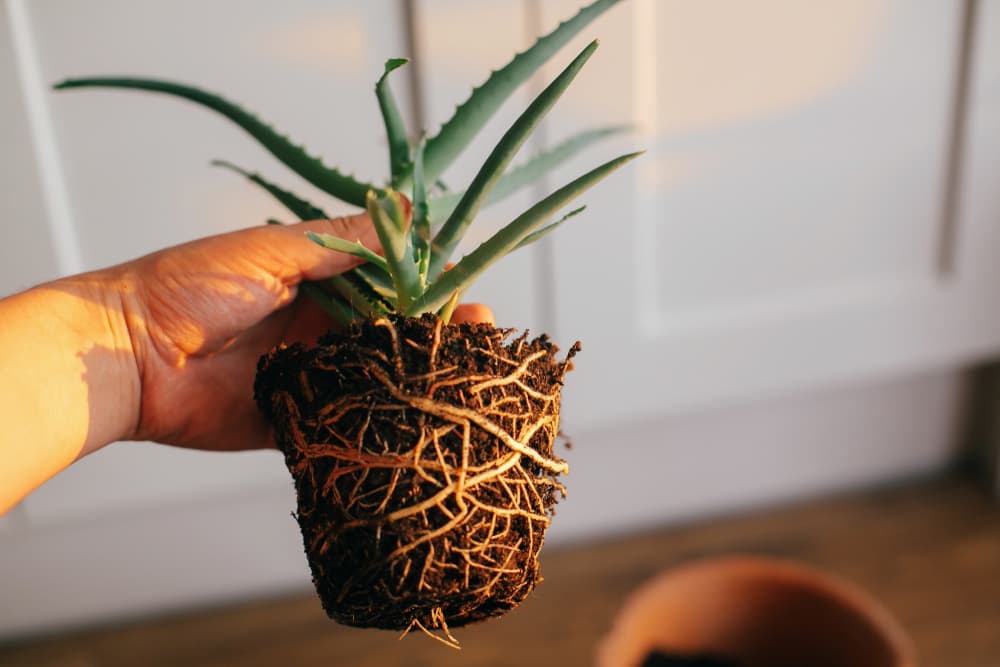Aloe Vera Growing Secrets We Learned Interviewing Succulent Expert Les Pearcy

SUCCULENTS > ALOE
Chris is a gardening writer and nature enthusiast. He graduated from Oxford Brookes University in 2022 with an MA in Psychology. Chris works with the Leeds Green Action Society, helping their food cooperative by growing various fruit and vegetables on their two allotments in Hyde Park, Leeds.
Reviewed By COLIN SKELLY

Colin is a Horticulturist and Horticultural Consultant with experience in a range of practical and managerial roles across heritage, commercial and public horticulture. He holds the Royal Horticultural Society’s Master of Horticulture award and has a particular interest in horticultural ecology and naturalistic planting for habitat and climate resilience.
Contributions From LES PEARCY

Les Pearcy is the Chairperson for The Haworthia Society and has been a member since its formation in 1986. The society focuses on the Aloaceae family and strives to find a better understanding of the plants in this genus, including Aloe. Les has been growing succulents for over 50 years.

Emily is a Gardening Writer, Photographer and Videographer from Derbyshire, UK. She is the Founder of Emily's Green Diary - a community of more than 75,000 people who share in her gardening journey.
ALOE GUIDES
You’ve probably heard of Aloe vera.
You’ll see it as an ingredient in plenty of creams and lotions, while bottles of Aloe drink are increasingly common on food shop shelves.
Whatever your introduction, the plant itself is a timeless classic.
In this guide, we have collaborated with succulent expert Les Pearcy, the Chairperson of The Haworthia Society.
“As a child, I was fascinated by these weirdly shaped plants and became hooked – literally with some of the hook-spined cacti!” says Les.
“My interest has never waned, and I have been very fortunate to see the plants growing in habitat in Southern Africa, USA and in the Canary, Madeira and Mediterranean Islands.
“Their ability to survive in such adverse conditions and then thrive in cultivation continues to captivate.”
Overview
| Botanical Name | Aloe vera |
| Plant Type | Succulent / Houseplant |
| Native Area | Africa, Madagascar, Jordan, Arabian Peninsula and Indian Ocean Islands |
| Hardiness Rating | H1C |
| Foliage | Evergreen |
| Flowers | Small tubular yellow flowers on racemes |
| When To Sow | Year-Round (Indoors) |
| Flowering Months | July, August |
Sunlight
Preferred
Full Sun
Exposure
Sheltered
Size
Height
0.5 – 1M
Spread
0.5 – 1M
Bloom Time
July – August
Soil
Preferred
Loam, sand
Moisture
Well drained
pH
Any
In scientific terms, Aloe vera is a succulent belonging to the genus Aloe – containing nearly 600 or so different species.1Aloe L. (n.d.). Kew Royal Botanic Gardens. Retrieved April 4, 2023, from https://powo.science.kew.org/taxon/urn:lsid:ipni.org:names:30106039-2#children
Aloe vera is considered the ‘true’ Aloe, the plant most indicative of the genus, because it remains the most visually iconic, and is the source from which the vast majority of commercially used Aloe is obtained.
Originally hailing from the Hajar Mountains in Northern Oman, Aloe vera now grows enthusiastically all over the world.2Aloe vera. (n.d.). Kew Royal Botanic Gardens. Retrieved March 9, 2023, from https://powo.science.kew.org/taxon/urn:lsid:ipni.org:names:530017-1
Despite conditions being quite different in the UK from those the Aloe is accustomed to, the plant has become commonplace here for myriad reasons, as highlighted earlier.
Why Grow Aloe?
Firstly, it’s an attractive and striking plant.
The ridged green stalks jut proudly outward from the soil, held rigid by the gel inside.
White blemishes on each stalk break up the dominant bright green colouration, adding visual interest and texture.

In full sunlight, the plant has an inarguable vivacity.
Secondly, Aloe vera is fairly easy to grow and look after.
This may not be a priority for all gardeners, especially those more versed in the art who may deliberately seek out plants that provide a bit of a challenge; but for amateur gardeners and casual interior designers who just want to incorporate a little bit of green, A. vera represents the perfect opportunity.
How To Grow Aloe
Potting Mix
As succulents, A. vera prefers a soil mix designed to encourage good drainage.
“They are best grown in a well-draining compost,” says Les.
“There are lots of different suggestions for the make-up of the soil, but a standard compost with the addition of sand, grit or perlite will do.”
Avoid regular gardening soil and look for something with ingredients like sand, grit, lava rock, or similar.
While some guides recommend adding a layer of gravel or similar to the bottom of pots to further encourage drainage, this isn’t required for A. vera, especially if you’re using the right soil.
Avoiding this layer gives the roots more space to take hold, and should lead to a healthier plant.

A. vera is most frequently grown from cuttings of a mature plant.
To grow, fill a container just over halfway with soil, then place the cutting in the soil and add more, making sure the cutting is firmly held in place.
Choosing A Container
Choosing the right pot is just as important as the right soil, when it comes to keeping your Aloe healthy.
A container conducive to moisture, made of terracotta or similar, is recommended.
It’s vital that the container has a drainage hole in the bottom, too, to prevent water pooling there (top tip: place some porous mesh between the hole and the soil to allow water out while preventing soil from escaping and making a mess).
Choose a pot that’s wider than it is deep in order to give your Aloe space to grow.
Preferred Sunlight
Also bear in mind that this is a plant built to thrive in hot, dry places.

While they’ve spread around the world, the natural conditions favoured by this plant involve a lot of heat and sunlight, and the more faithfully you can recreate this in your home, the better your Aloe vera will grow.
“Most Aloes are relatively easy to grow and rely on good light conditions, so a bright sunny windowsill is ideal,” says Les.
Choose a spot with a lot of sunlight but where the plant isn’t in full sun all day.
The corner of a room or a window sill that doesn’t get full exposure are two good examples.
A room temperature of between 15-25°C is typically ideal for your Aloe.
Ongoing Aloe Care
Fertilising
You don’t need to fertilise A. vera much, or even at all.
If you decide to do so, use a houseplant formula weakened to about half strength by mixing with regular soil.
Add a small amount around the base of your plant every few weeks, during spring and summer.
Fertilise a maximum of one time per month.
Pruning
A. vera plants don’t need much pruning, as a rule.
The main reason for cutting your Aloe is to clean up unhealthy sections, or to get at the gel inside.
If you’re wondering how to cut an A. vera plant without killing it, simply trim the section off with sharp scissors or trimmers.
When trimming dried brown sections from the end of a stalk, just cut the affected section.

To get the gel inside, it’s best to select a thick and mature stalk, then cut at the base.
“I always keep an Aloe vera on my kitchen window sill – ideally located for any mishaps when cooking!” says Master Horticulturist Colin Skelly.
“I also harvest a few offsets, or ‘pups’, every year for giving away to friends and family.”
Cutting at an angle facilitates better draining and healthier regrowing for the plant.
After you’ve cut off the stalk, wash any dirt from the base, then stand upright in a glass to allow the resins to drain out.
These aren’t good for human use and can be discarded.
Once these have drained, peel the stalk with a vegetable peeler and put it in a blender until it reaches a milky consistency.
Common Problems
A. vera is fairly sturdy and isn’t prone to many problems.
However, there is a particular pest that can cause some problems for this plant, as Les explains:
“The main pest encountered is the mealy bug. These appear as white wool-like masses.
“Big infestations are dealt with using insecticide sprays, but the odd insect can be easily removed by using methylated spirits applied with a small paintbrush.”
Here we outline a few other issues you may encounter, and how to resolve them –
Root / Leaf Rot
The biggest risk with A. vera is rot, whether at root or leaf level.
The primary cause of such rot is overwatering: a plant that cannot drain properly will sit in moisture, and this creates an environment that facilitates the growth of fungus that leads to rotting.
To avoid rot, water infrequently and only when required.
Ensure your plant is in well-draining soil, with a hole at the bottom of each container, and in plenty of sunlight.

Watering the roots directly, rather than pouring water onto the whole plant, will ensure that leaves and stalks stay as dry as possible, further mitigating the risk.
Root-Bound Plants
Any plant in a container will eventually become root-bound.
This occurs when the root system becomes so dense that the plant can no longer get enough nutrition from the soil.
Brown, wilting sections are indicative of root rot – if you suspect this problem, you’ll need to repot your A. vera into a bigger pot.

Gently tease it out of the current pot, taking care not to disrupt or damage the roots, then re-pot, taking care to choose a bigger container!
Hopefully, you’re enthused and prepared to get an A. vera plant established and thriving in your home.
References
- 1Aloe L. (n.d.). Kew Royal Botanic Gardens. Retrieved April 4, 2023, from https://powo.science.kew.org/taxon/urn:lsid:ipni.org:names:30106039-2#children
- 2Aloe vera. (n.d.). Kew Royal Botanic Gardens. Retrieved March 9, 2023, from https://powo.science.kew.org/taxon/urn:lsid:ipni.org:names:530017-1
